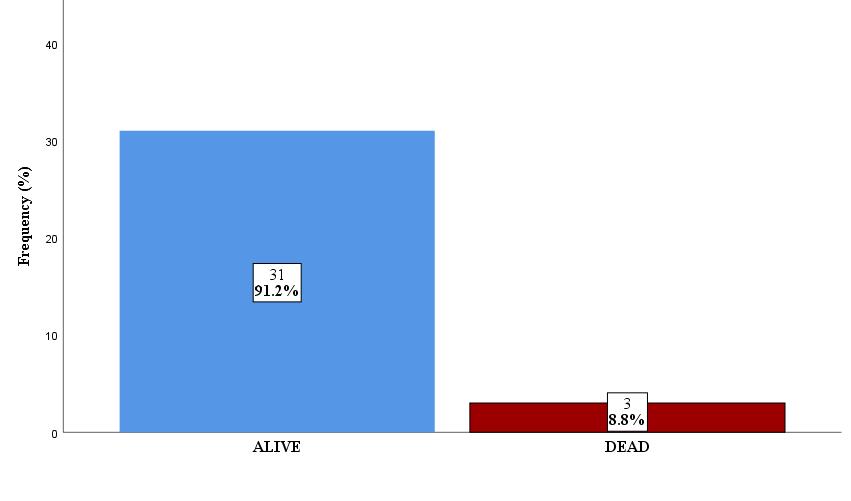Sociodemographic characteristics and outcomes following closed thoracostomy tube drainage in a tertiary hospital in Osogbo
ORIGINAL ARTICLE
Keywords:
Closed thoracostomy tube drainage, underwater seal drainage, Chest tube, Pleural EffusionAbstract
Introduction
Closed thoracostomy tube with underwater seal drainage (CTTD) is a common life-saving procedure performed in the hospital setting. This study evaluates the socio-demographic characteristics of our patients who had CTTD, the indication for the procedure and outcome.
Methods
A well-structured proforma was used to collect information on patients that had CTTD for various reasons during the period under study. The age, gender, urgency of CTTD intervention, duration of admission, the side of the chest involved, indication, number of days patient was on CTTD, characteristics of the effluent, and outcomes were the variables analysed.
Results
A total number of 34 patients were recruited. The mean age was 43.15±16.9 years. Majority of the patients 21 (61.8%) were females. The CTTD was left sided in 44.1%, right sided in 47.1% and bilateral in 8.8%. In 19(55.9%) patients, the procedure was as an urgent intervention. Majority, 14(41.2%), had pulmonary tuberculosis, 10(29.4%) had metastatic breast cancer, 5(14.7%) had pneumonia and 2(5.9%) had trauma. One patient (2.9%) each had decompensated chronic liver disease, subphrenic abcesss and end stage renal disease. Patients were on CTTD for an average of 7 days. Majority, 20(58.8%), had serous effluent. Mortality occurred in 3 (8.8%) patients; all had malignant and bloody effusion.
Conclusion
CTTD is a very common and important life-saving procedure performed more commonly as an emergency. Majority had infective causes as the etiology. The odds of mortality were higher amongst those with malignant pleural effusion and bloody effluent.



